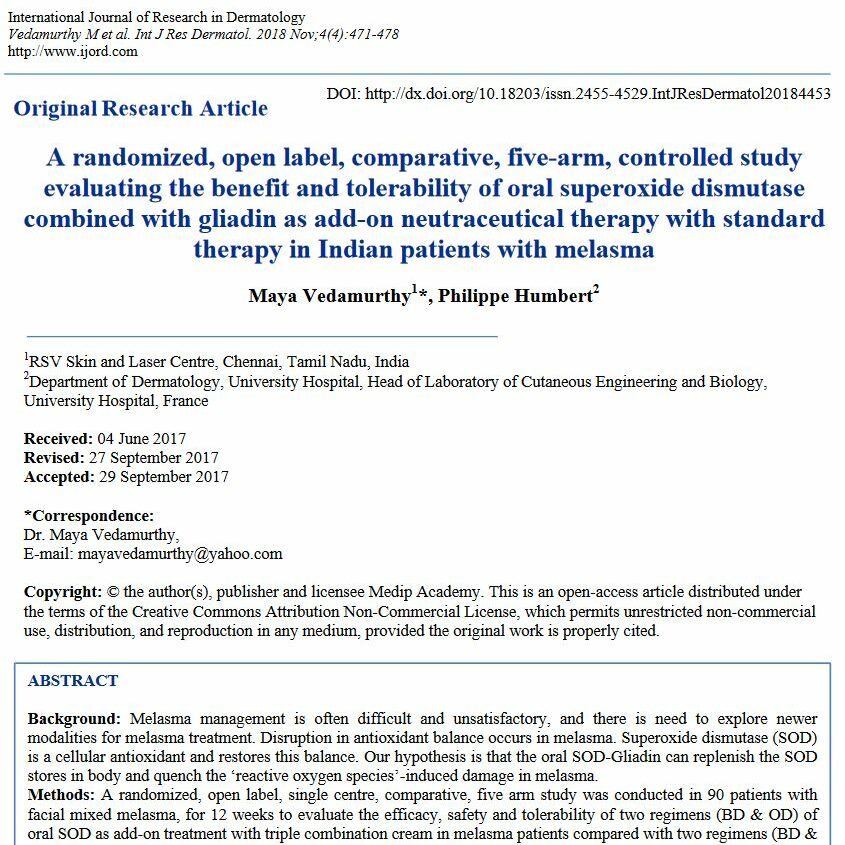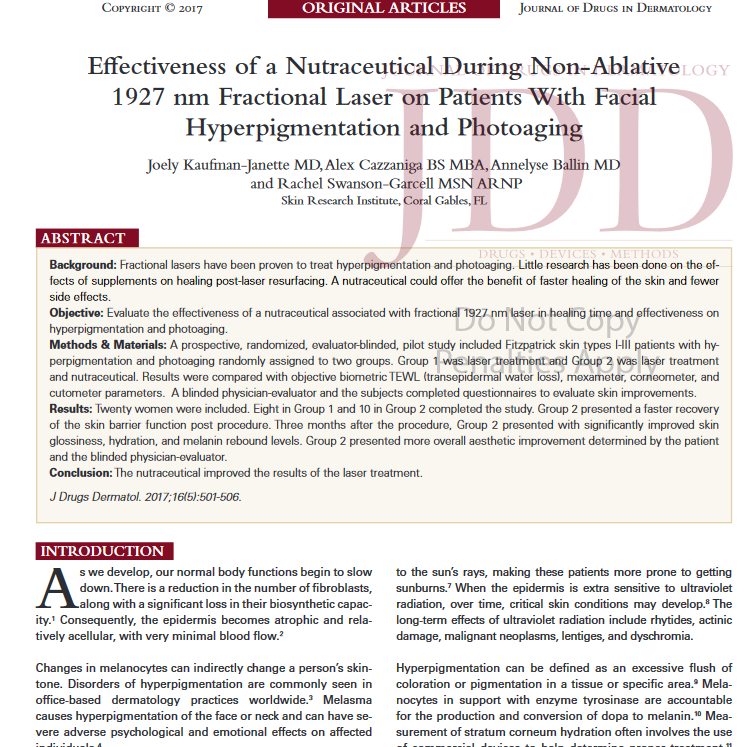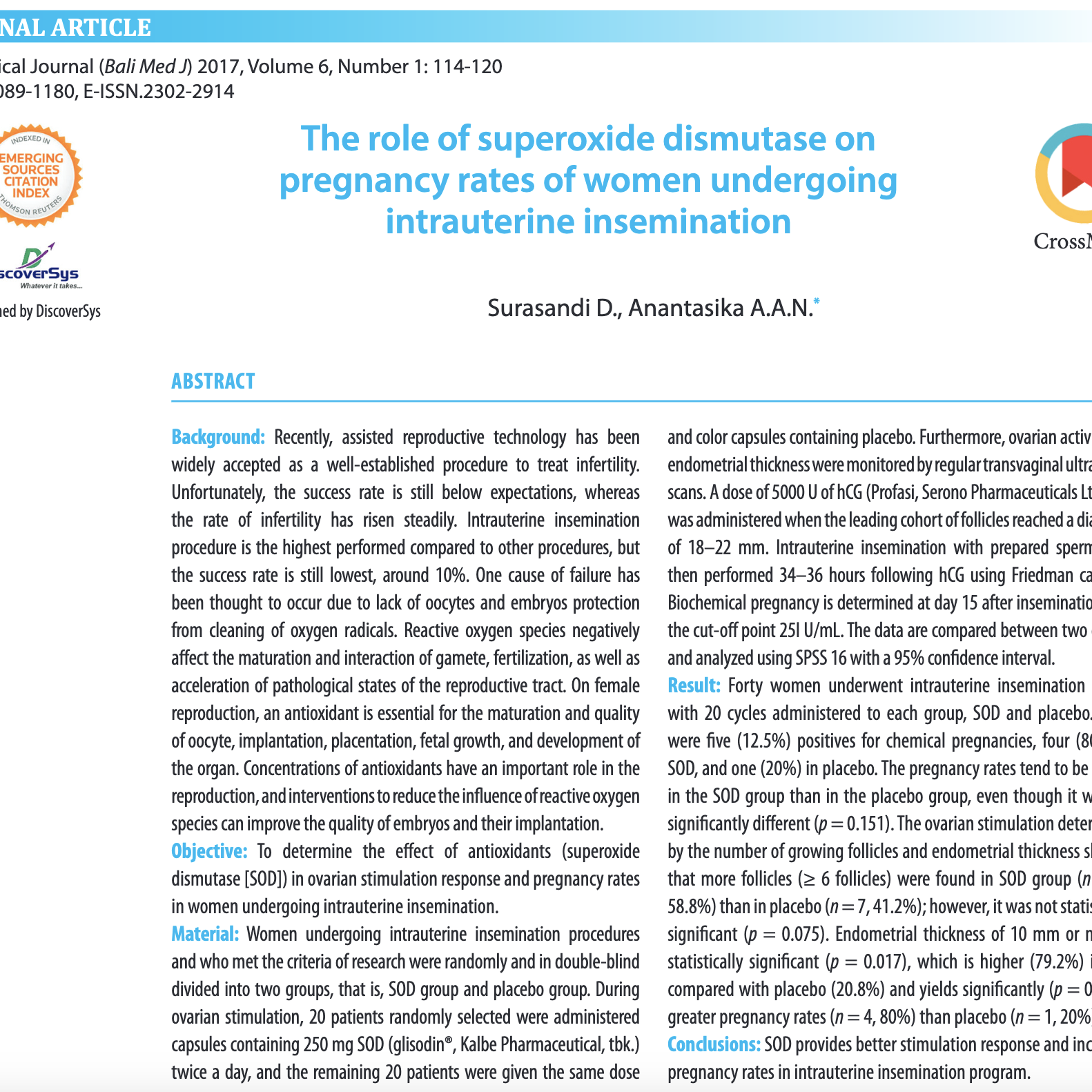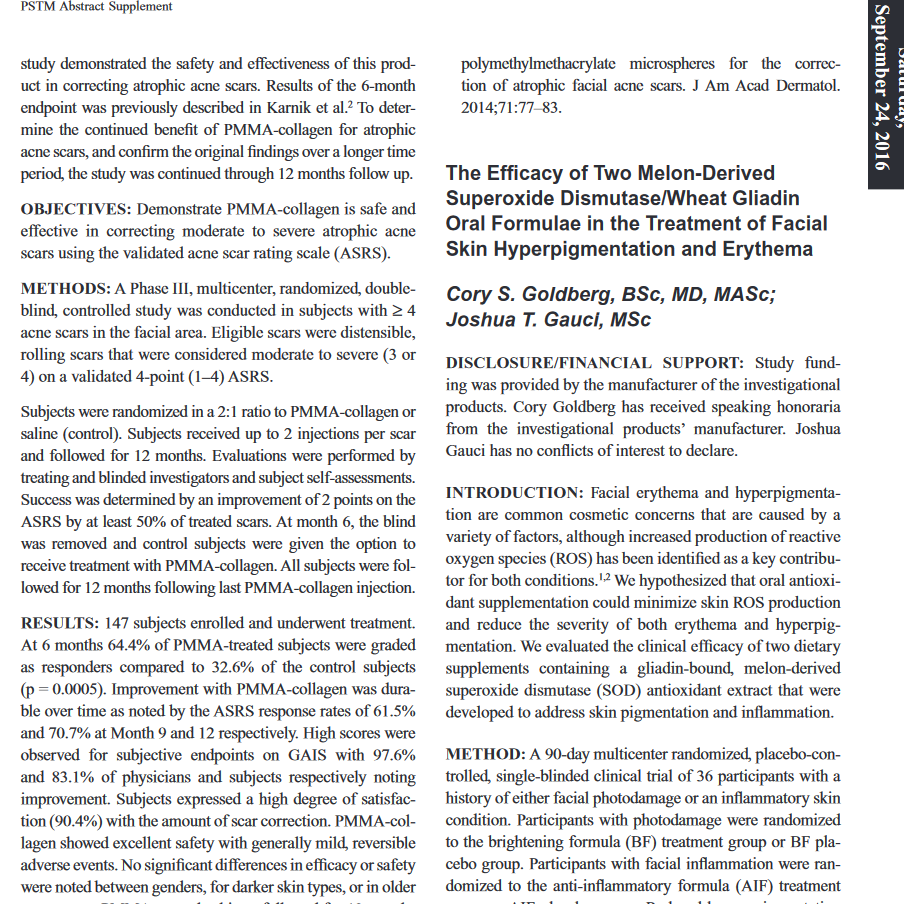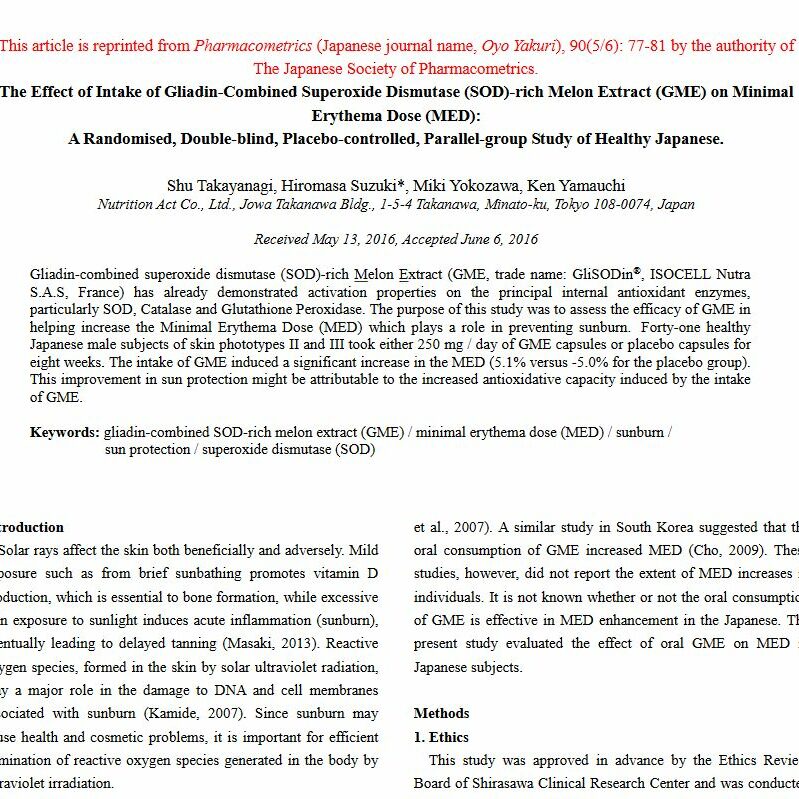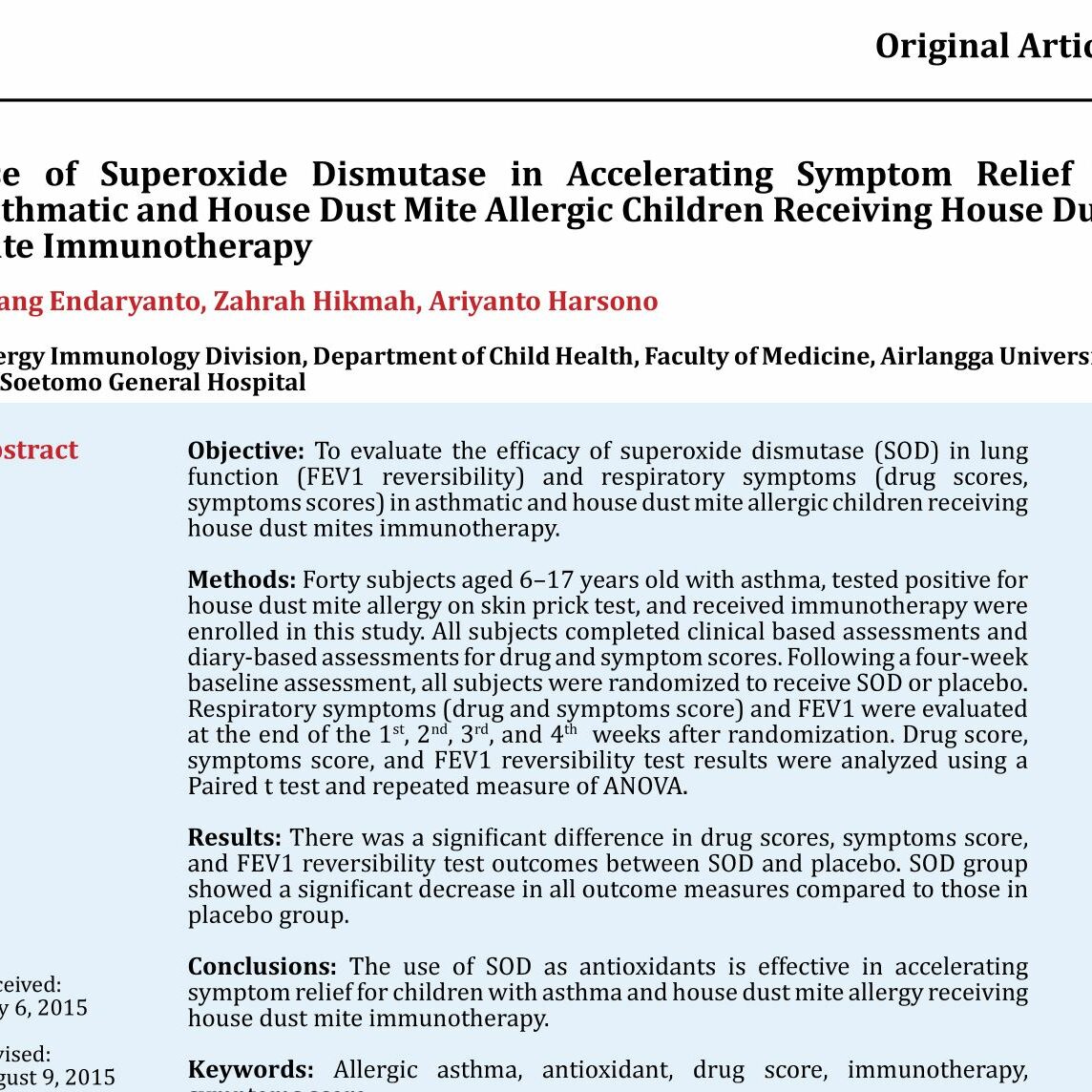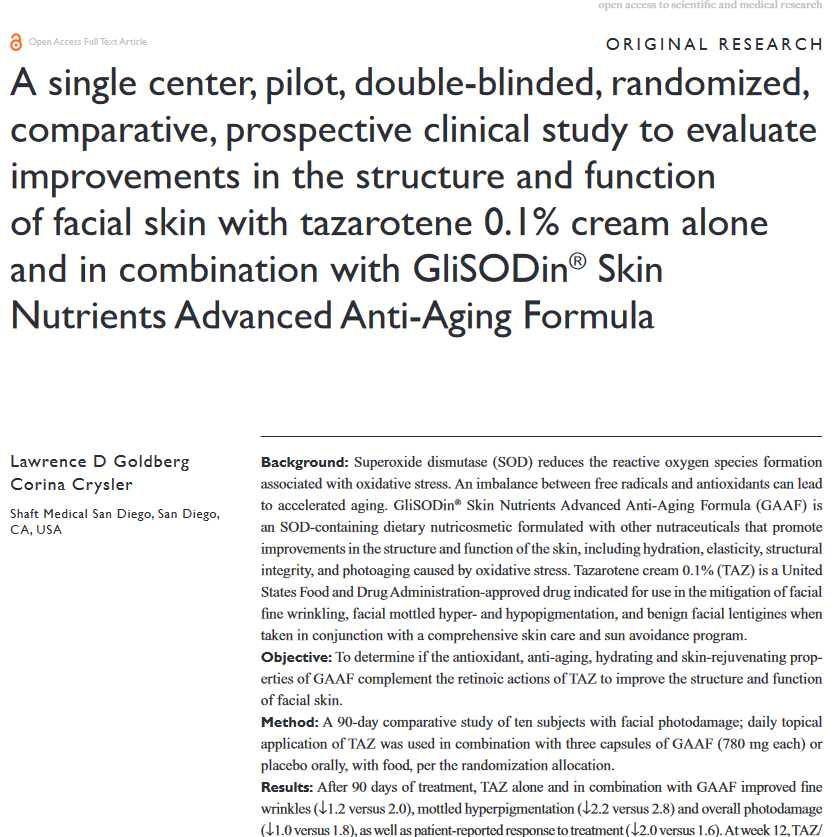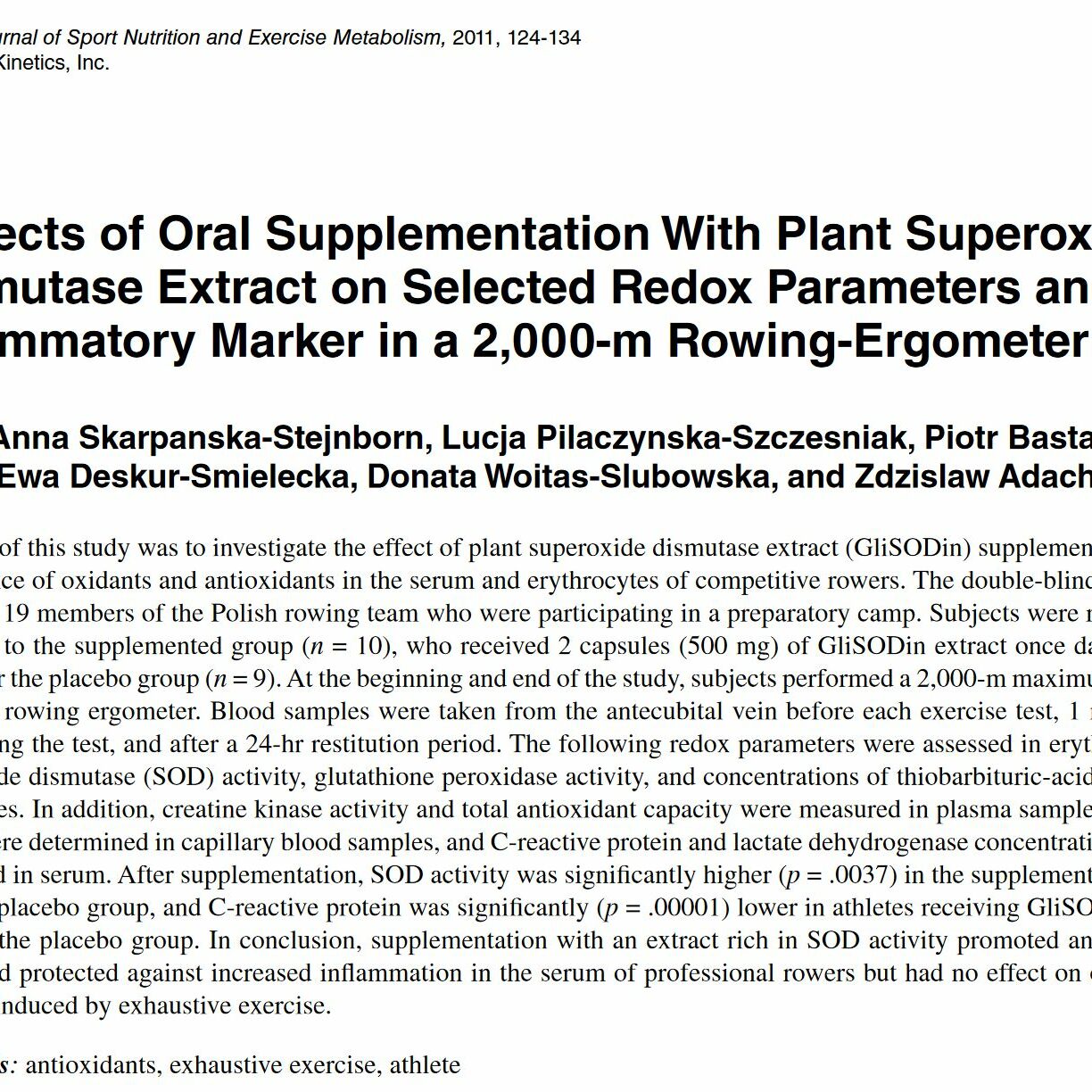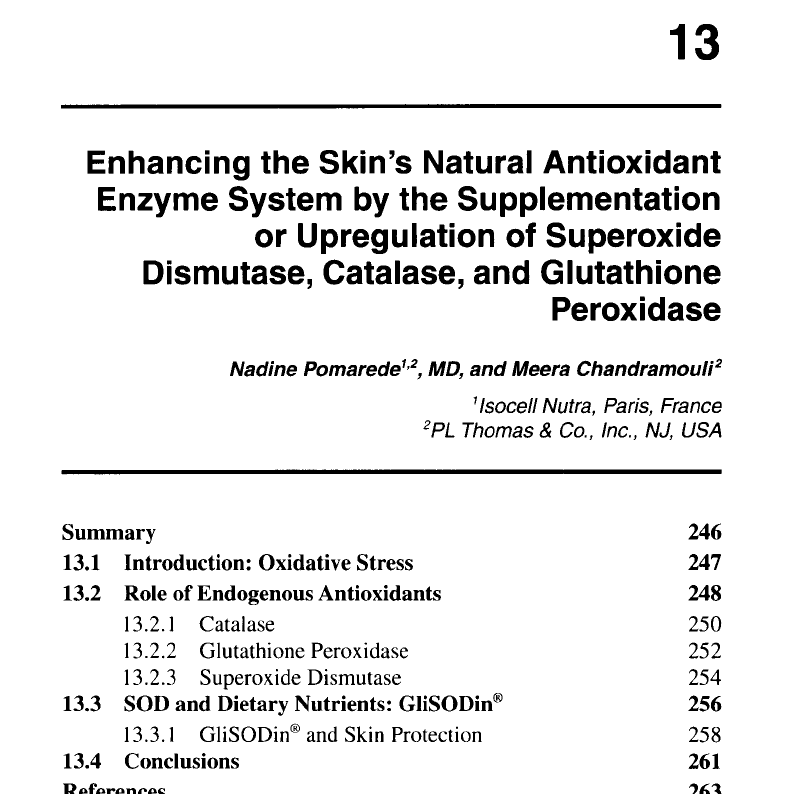
- Journal: J Eur Acad Dermatol Venereol
- Date: 2021 August
- DOI: 10.1111/jdv.17331
Abstract
Background:
Despite a solid rationale, the usefulness of antioxidants in treating vitiligo has not been clearly demonstrated. Combining superoxide dismutase (SOD) with a wheat gliadin biopolymer protects it during the passage through the gastrointestinal tract.
Objective:
To evaluate the efficacy of gliadin-protected SOD (GP-SOD), associated with narrowband ultraviolet B(NB-UVB), for treating vitiligo.
Methods:
We conducted a 24-week monocentric interventional prospective randomized placebo-controlled trial in the tertiary center for vitiligo care in the department of Dermatology of Nice University hospital, Nice, France. Subjects with non-segmental vitiligo affecting more than 5% of the total body surface were included. The subjects received gliadin-protected SOD (GP-SOD; 1 g/day for 12 weeks followed by 0.5 g/day for 12 weeks) or placebo in combination with twice-weekly sessions of NB-UVB. The primary endpoint was the total repigmentation rate at 24 weeks, compared with baseline, as assessed by investigator-assessed Vitiligo Extent Score (VES) on standardized pictures.
Results:
A total of 50 patients were included. After 24 weeks, a greater improvement in VES was observed in the GP-SOD group (19.85%; SE 4.63, P < 0.0001) compared with the placebo group (8.83%; SE 4.72, P = 0.0676). Tolerance was good in both groups. No related side-effect was reported.
Conclusions:
The use of GP-SOD appears to be a useful add-on to phototherapy in the treatment of vitiligo patients.



